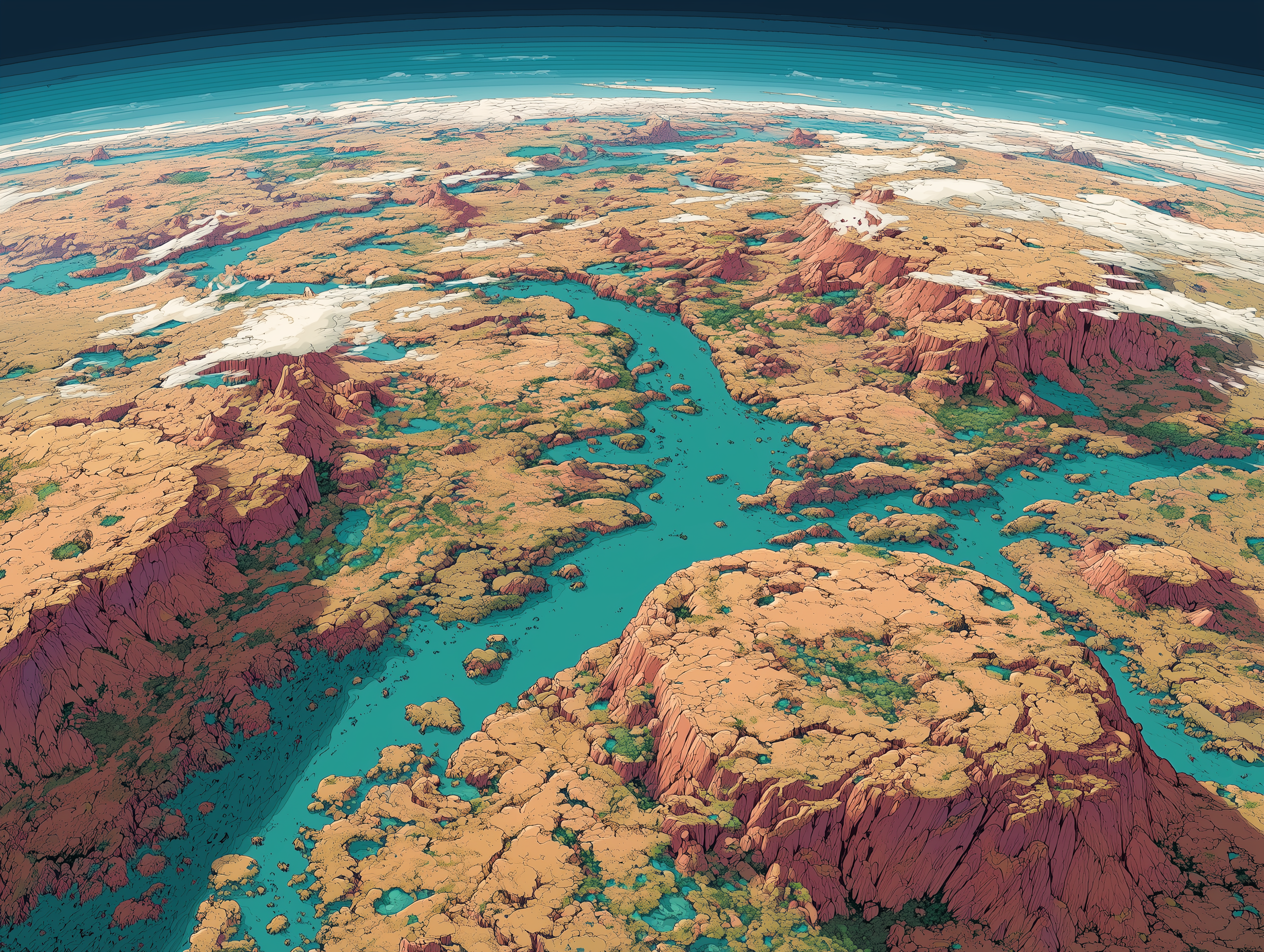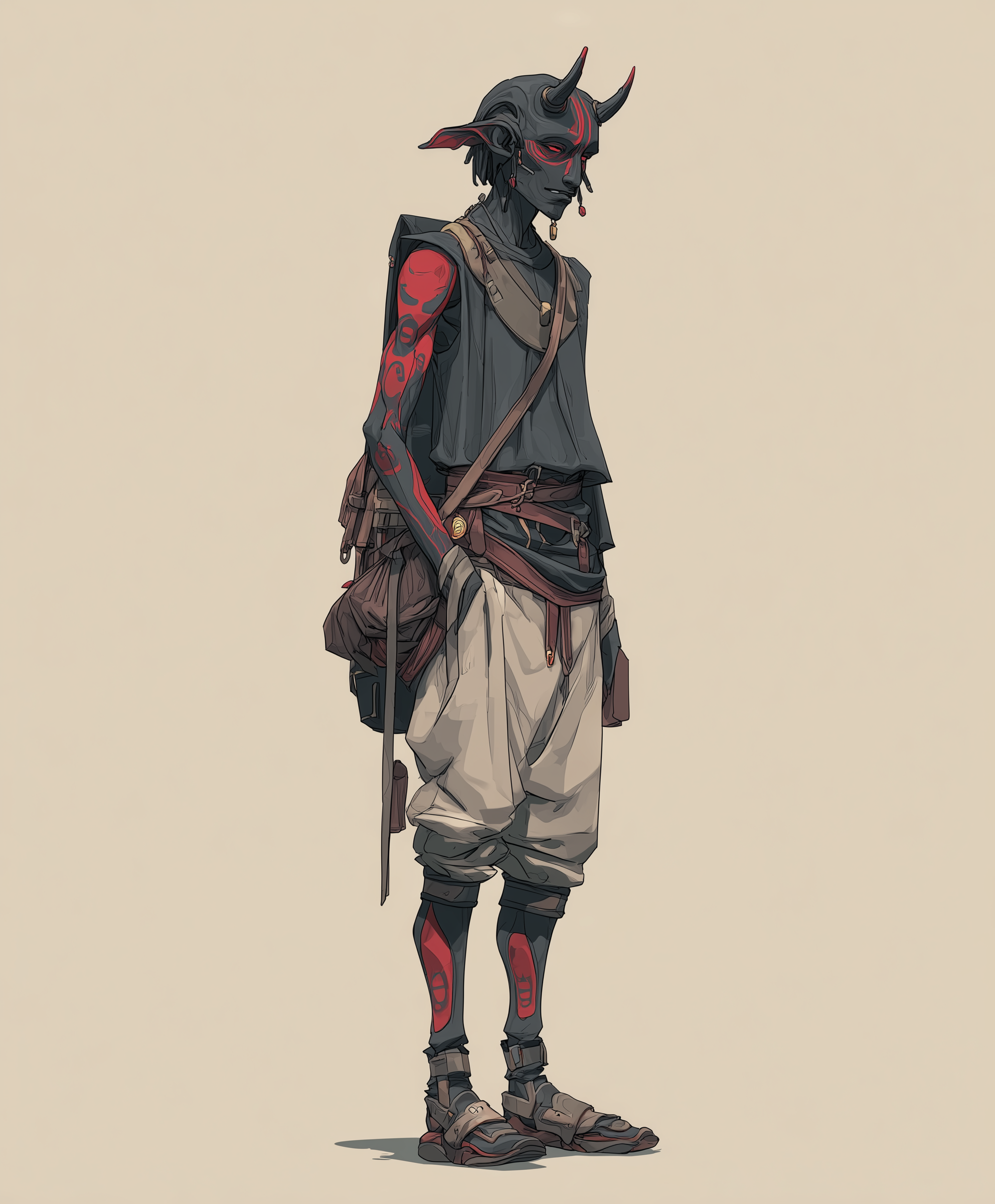Vastana - Home of the Diavolos
Note on inspiration: The Diavolos was inspired by the cover art of The Devils by Joe Abercrombie. The name of the species is taken from JoJo’s Bizarre Adventure; my girlfriend and I just finished Golden Wind. The name of the location, Vastana, felt close in vibe and language structure to Diavolos. And I just wanted to write about a planet that was arid but not a wasteland, all of these aspects seemed to fit in nicely together, so that is how this all came to be.
History and Modern
The boundaries in which the Federated Territories of Vash currently govern within
But Vastana has a much longer history that spans back much further. The planet itself is thought to be several billion years old, spending much of this time as molten rock. Though roughly 500 million years ago, it cooled enough to solidify into a rocky, uninhabitable wasteland. Then, 200 million years ago, a series of asteroids smashed into the planet, not only slightly altering its location in space but also leaving critical microbes on the planet that would eventually lead to life flourishing. Within the next 100 million years, Vastana would transform drastically, forming a weather system and growing a variety of flora and fauna, eventually becoming the planet it resembles now. Arid but full of diverse life and geography, including resilient short fields of grass, lazy rivers, and hardy shrubs.
Then, roughly 400’000 years ago, the planet’s first bipedal species capable of language and tools emerged. Considered one of the youngest species capable of space travel, the Diavolos are the native species of Vastana who would be the first to begin wide-scale agriculture and to gather in and construct towns and cities. And they would be the first, and only, species from Vastana to leave its atmosphere and travel the wider Delta Space.
As a culture, the Diavolos of Vastana are rather laid back; they work well together and have had very few major wars amongst themselves. Due to this, and partially due to the geographic layout of the planet, they are centrally governed by an elected council, and while they have local governance, they work together on a planetary scale instead of by nation-state. And this has worked for them for countless generations.
They are generally a very respectable people, towards both each other and the planet. Focusing on sustainable practices and environmentally friendly activities and initiatives. Because of this, Vastana has one of the healthiest and cleanest atmospheres within the Delta Space, and while it provides plenty for the species that live there, it is not necessarily an abundant planet, so it hasn’t garnered the greedy eyes of any MegaCorpos quite yet.
Native Species — The Diavolos
The Diavolos of Vastana are a species defined by a striking appearance that belies their true nature. They typically stand shorter than many galactic averages, their frames covered in dark, resilient leathery skin, often adorned with intricate red or burgundy tattooing, which is not simply a cultural hallmark but a natural pattern — occurring much like a fingerprint, no two Diavolos have the same patterns. The most distinctive feature, and the origin of their species name, are the small, blunt horn-like protrusions that emerge from their heads. Which off-world does garner them strange looks, but on Vastana, their horns are viewed much like someone's hair or facial features. It is just a part of their being, and not to be judged upon.
Two distinct Diavolos with their own unique horns and skin patterns
Despite this "devilish" aesthetic, the Diavolos are renowned not for malice or trickery, but for their deep-seated work ethic and unwavering loyalty to their home planet. They are widely regarded as industrious and dependable, contributing significantly to the prosperity of the Federated Territories of Vash. A profound, almost mystical connection to Vastana runs through their society; whether perceived as a spiritual bond, an inexplicable pull, or simply an innate comfort derived from the arid brush and gentle waterways, this kinship forms a core tenet of their identity. This strong connection to their origins fosters a grounded and resilient culture, proud of their heritage and the unique beauty of their arid home.





Comments